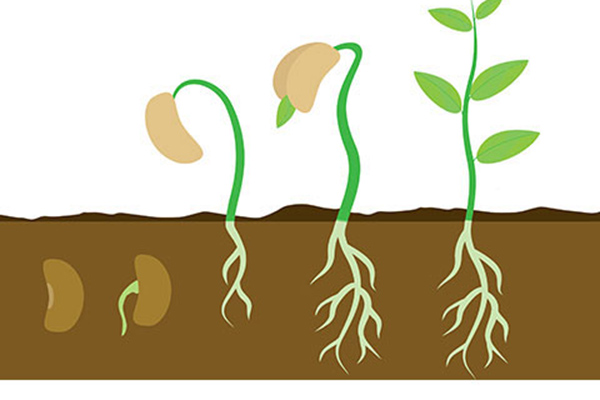Origin: a Latin derivative
meaning "Gift of the Earth."
Part 3: Growth, Reproduction, and Evolution—Plant Growth

Plants can be annual, biennial or perennial which means that they have a one or two year life cycle, or an infinite life cycle. They are also divided into vascular and non-vascular plants. Vascular plants such as ferns, conifers and flowering plants possess specialized 'vascular' (vessel-like) tissues that permit the transport of water and water-soluble materials throughout the plant. In contrast, non-vascular plants such as liverworts and mosses do not contain tissues that allow the transport of water, they rely on direct access to both water and water-soluble materials.
Plants are constantly in a state of growth, change, and adaptation. Two main growth mechanisms exist that allow plants to increase in size, width, and girth: the production of new cells and the enlargement of existing cells.
Plants generate new tissues from growth centers that are located at the tips of their roots and stems. The growth centers can produce three different types of tissues: the plant’s outer “skin”, the fleshy conductive tissues, and the ground tissue (soft spongy tissue found between other types of tissues or in the stem’s core). Certain plants like trees, woody vines, and bushes have additional types of tissues that allow for the growth of specialized parts such as bark. From these growth centers, a plant is able to sprout new leaves, grow flower buds, or replace damaged tissues.
Pre-existing cells within plants can also increase their size by expanding to accommodate the formation of new proteins, organelles, and cytoplasmic fluid volume. Inside every plant cell are large central vacuoles—organelles that take up and store water to later assist in cellular expansion. Depending on the amount of water being stored, the pliable protein network composing the structure of the cell is able to expand or contract to make room for a larger vacuole. It is critical that plant cells contain sufficient water because it is an important reactant in photosynthesis and allows for transport of different substances throughout the cell’s internal transport network. One sign of water deprivation in plants is shriveled leaves or other plant parts.





